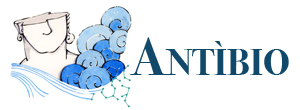Present for the meeting:
- Giuliana Impellizzeri, PI and Chairperson (IMM-CNR)
- Massimo Zimbone (IMM-CNR)
- Gianni Pezzotti Escobar (IMM-CNR)
- Giuseppe Nicotra (IMM-CNR)
- Giuseppe Pantè (IMM-CNR)
- Sabrina Carola Carroccio (IPCB-CNR)
- Giusy Curcuruto (IPCB-CNR)
- Andrea Scamporrino (IPCB-CNR)
- Paolo Riccobene (IPCB-CNR)
- Roberta Puglisi (IPCB-CNR)
- Anne Kahru (NICPB)
- Villem Aruoja (NICPB)
- Mariliis Sihtmae (NICPB)
- Sandro Dattilo (IPCB-CNR)
- Emanuele Mirabella (IPCB-CNR)
- Antonio Mio (IMM-CNR)
After the welcome speech, Giuliana Impellizzeri reported the activities carried out in the framework of WP1, in particular, and of the project, in general. Specifically, she talked about the preparation of the mid-term progress report on project advances (D.1.2.1) planned for month 12. In addition, the CNR (the funding body) requested within April 15th, 2023 the following documentation regarding the first year of the project:
- Scientific technical report
- Summary file of expenses incurred
- Documentation to support the financial reporting
Giuliana Impellizzeri, as substitute for Maria Cantarella (leader of WP2), illustrated the main experimental activities carried out in the framework of WP2 in these months. She talked about the performed syntheses of imprinted TiO2 by chemical precipitation using as template amoxicillin or ciprofloxacin. The effects of each procedure on the material and on its photocatalytic performance were described. In the end, she briefly illustrated the planned activities for the following months.
WP3 research activity advancements were illustrated by the WP leader Dr. Sabrina Carola Carroccio. Sabrina showed preliminary results obtained by the IPCB research team, aimed at investigating the best synthetic strategy for developing of the molecularly imprinted magnetic material, containing an organic photosensitizer. She discussed the possible mechanisms and kinetics involved in the sequestration process, giving a comprehensive overview, which is helpful to formulate innovative materials. Interestingly, without the imprinting process, such materials do not show any affinity for antibiotics in water. Moreover, she discussed possible alternative strategies for magnetite functionalization, as reported in a recently published paper, related to the Antìbio project.
In the framework of WP2 and WP3 activities, Giuseppe Nicotra is involved in the characterization of nanomaterials by Transmission Electron Microscopy (TEM). In this first phase of characterization activities, the best preparation technique was explored to be able to characterize the samples by TEM. Since the sample has an important polymeric part, traditional preparation techniques that make use of ion beams are in fact not suitable. For this reason, it was chosen to perform the preparation by ultramicrotome, after having found that the use of powders deposited on the grid did not lead to the desired results.
In the context of WP4, Anne Kahru talked about the results of the toxicity tests using 3 bioassays:
- 30 min Vibrio fischeri bioluminescent inhibition assay (ISO 21338:2010
- 24 h Daphnia magna immobilisation test (OECD202)
- 72h Raphidocelis subcapitata growth inhibition test (OECD201)
Prof. Kahru also showed that materials accumulated in the daphnid’s gut, showing the daphnids’ vitality.
Andrea Scamporrino, leader of WP5 gave a speech mainly on two topics; the first concerned organizing the symposium at the European Materials Research Society (E-MRS) in Strasbourg, and the second focused on creating gadgets branded with the project logo.
Andrea confirmed that the activities on the Symposium organization started in October, a few days after the second Antìbio meeting. Specifically, the “Advanced Materials for Environmental Challenges” meeting will be held from 29th May to 2nd June next year, during the Spring Meeting 2023. After describing the complicated initial phase of choosing the gadgets and creating the graphics, Andrea Scamporrino showed the result of the work done, a collection of gadgets decorated with the Antìbio “brand”.
After the description of the gadgets, the WP5 leader took the opportunity to communicate that two articles have already been published within the ANTÌBIO project.
Before giving the floor, Andrea asked, once again, the other partners to share the various posts as much as possible, to maximize the dissemination of scientific content with a high social impact, such as that relating to antibiotic resistance.
At the end of the presentations of the WPs, Giuliana Impellizzeri showed the next deliverables and milestones to be reached for all WPs, including also the M 1.3.10 regarding the open lecture of Ian Nicholls to be held on October 2023.


